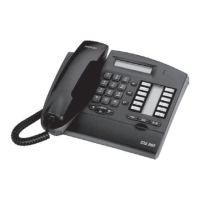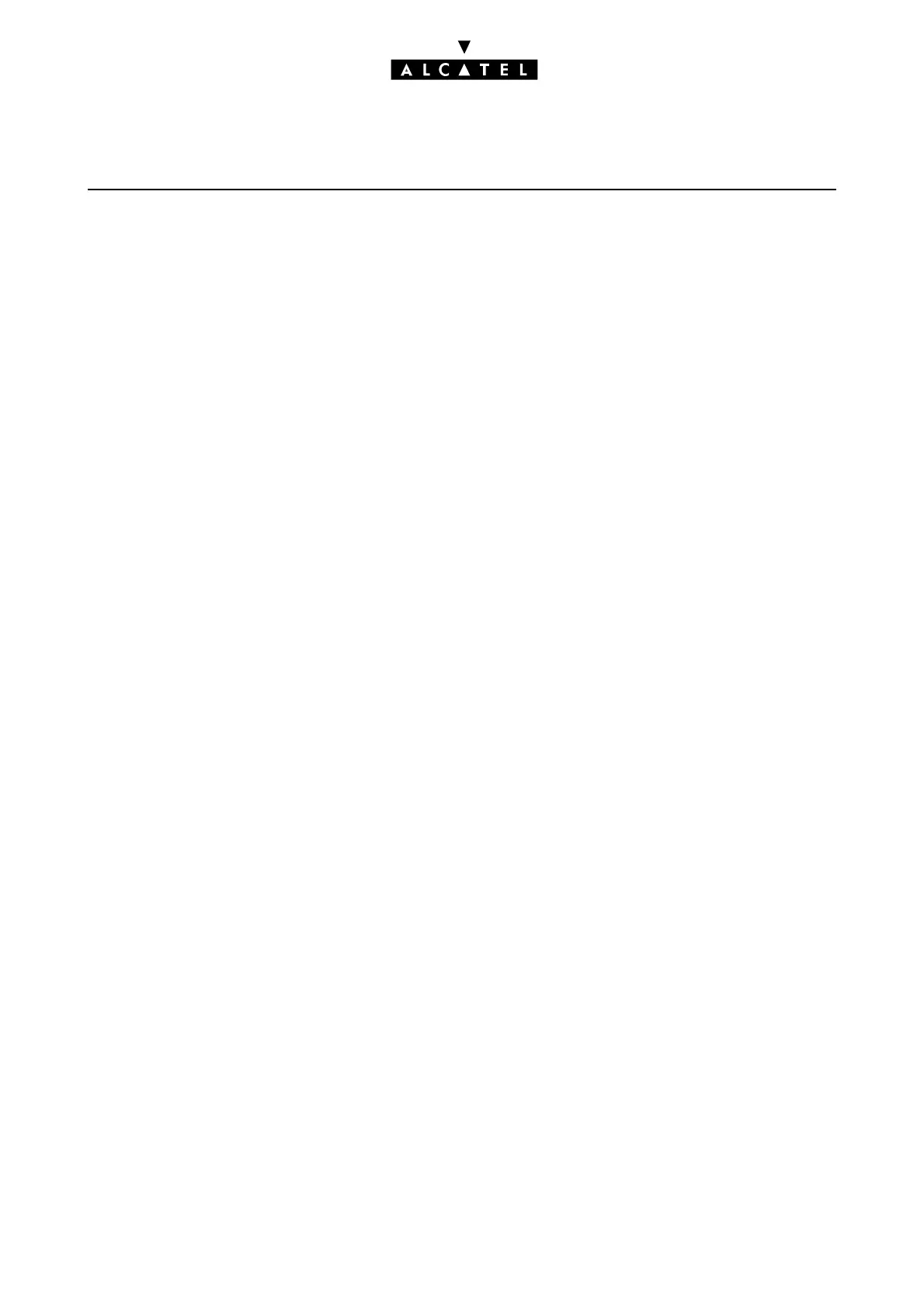BOARD MANAGEMENT MAINTENANCE
Ed. 042/2 Réf. 3EH 21000 BSAA
Example:
We have an Alcatel OmniPCX Office system comprising 2 modules:
- a basic module with 2 VMU ports and fitted with a UAI16 board (a V24 option is embedded in the
Reflexes sets connected to board interfaces 1 and 16)
- an add-on module fitted with a UAI16 board (a V24 option is embedded in the set connected to
the first board interface)
- after the system boot, 10 DECT handsets are added using MMC-PM5.
In the above configuration, and with a 3-digit numbering plan, the following directory numbers are
assigned:
- 101 to 116: Reflexes sets on the basic module
- 117 to 132: Reflexes sets on the add-on module
- 133 and 134: VMU ports
- 135 and 136: V24 accesses on the basic module
- 137: V24 accesses on the add-on module
- 138 to 147: DECT handsets
Configuration checks
Every time a hardware or configuration change is made, the following limits are checked:
- corded interfaces: maximum 236. Any additional interface will be refused.
- directory numbers: maximum 250. Any attempt to add another number will be rejected. The
directory numbers assigned to the auxiliaries (VMU, XRA, etc) are not covered by these checks, and
are always accepted.
- D-channels (T0/T1/T2/DASS2 interfaces): maximum 12. Any additional interface (T0) or
board (PRA) will be refused.
- B-channels (TLs, ISDN access, VoIP access): maximum 120. Any attempt to add another in-
terface will be rejected (and the interface containing the B-channel in question declared out of ser-
vice).
- hard disks: maximum 2.
INITIALIZING SETS
On powering up, Reflexes sets execute a self-test:
-display test
- test of the LEDs or icons of the set and add-on module, if any
-audio test

